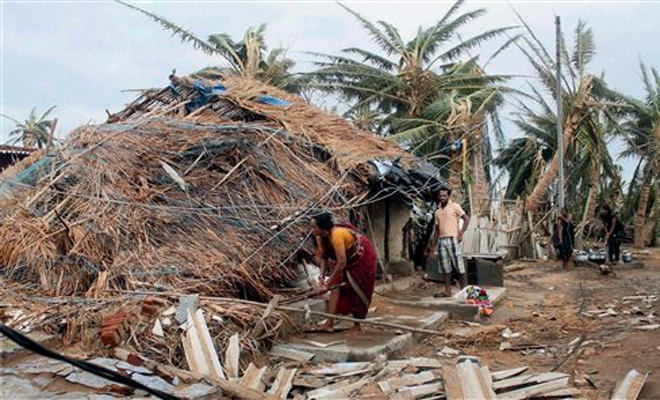Bhubaneswar: Khokan Parmanik can vividly recall what he had seen as a child 23 years ago – huge tidal waves lashing his village, people including his parents and brothers getting swept away by the turbulent sea and houses being destroyed by a wall of water.
The lives of Pramanik and thousands of other people living in villages and towns near the coast of Odisha changed on that day, October 29 of 1999. They lost near and dear ones and were rendered homeless as a Super Cyclone barrelled through the state causing insuperable damage.
“When the tidal surge entered our village, my grandmother and I climbed a banyan tree nearby. My father helped us because I was a child and my grandmother an elderly person,” said Pramanik, now a 29-year-old man.
A resident of Kankana village under Erasama block in Jagatsinghpur district, he said, “We were saved. But the next morning, we found my father, mother and brother dead.”
The Super Cyclone made landfall near Paradip with the highest wind speed of 260 kmph. It was the most intense tropical cyclone that crossed the Indian coast after satellites started monitoring storms.
Torrential rain, tidal waves as high as 6-7 metres and flood wreaked havoc across the Odisha coast killing 9,843 people officially, mostly in Jagatsinghpur district.
Rescuers had found carcasses of cattle and bodies of human beings lying side by side in many places.
“I even saw human bodies stuck on trees after tidal water receded. Volunteers of Anandmarg fished out bodies from accumulated water and undertook mass cremation by pouring kerosene oil,” said Biswadas Mohanty, a Physics professor who visited Japa village under Erasama block.
There was no vulture to eat corpses as the big birds flew away due to high-velocity wind, Mohanty said.
“How can I forget the scene of people being swept away in the tidal surge during the cyclone?” said Madhuri Das of Sunadiha village of worst-hit Jagatsinghpur, who was a four-year-old girl then.
She had a sister, and her father told her mother to keep one daughter with her.
“She kept me. I lost everyone else including my grandparents,” said Das, who is now 27.
Not just coastal villages, the capital city of Bhubaneswar was also severely affected by the Super Cyclone of 1999.
Electricity connection and telephone lines were dead for days as poles were uprooted while the city lost much of its green cover.
This correspondent had to enter the residence of the then chief minister Giridhar Gamang by crawling under a tree which fell on the main gate of the premises.
However, during these 23 years, Odisha has witnessed a sea change and the state is now recognised as one of the best in the country to handle such natural calamities.
Odisha’s journey to face nature’s fury began immediately after the devastation of the Super Cyclone, though the then chief minister Giridhar Gamag had to quit and another Congress leader Hemananda Biswal took over in December 1999.
The Congress was defeated in the Assembly election held the next year and Naveen Patnaik of the Biju Janata Dal became the chief minister of Odisha.
“Our geographic location makes us prone to natural disasters. Every life is precious. Nearly 10,000 people died in Super Cyclone in 1999. Then, we did not have safe shelters. During these years, 815 multi-purpose cyclone and flood shelters have been constructed,” Patnaik said Saturday.
Fifty-five more such facilities are coming up across the state, he said while attending a meeting held to observe the 23rd anniversary of the 1999 super cyclone.
After the construction of shelters, Odisha witnessed a reduction in the number of human casualties as people move into them when a cyclone approaches the coast.
Later, the highest number of human death was 77 when cyclone Titli hit Odisha in 2018, while it was 46 in cyclone Phailin in 2013.
Odisha has encountered 10 major cyclones in the past 23 years including three storms in 2021.
By Arabinda Mishra
PTI

